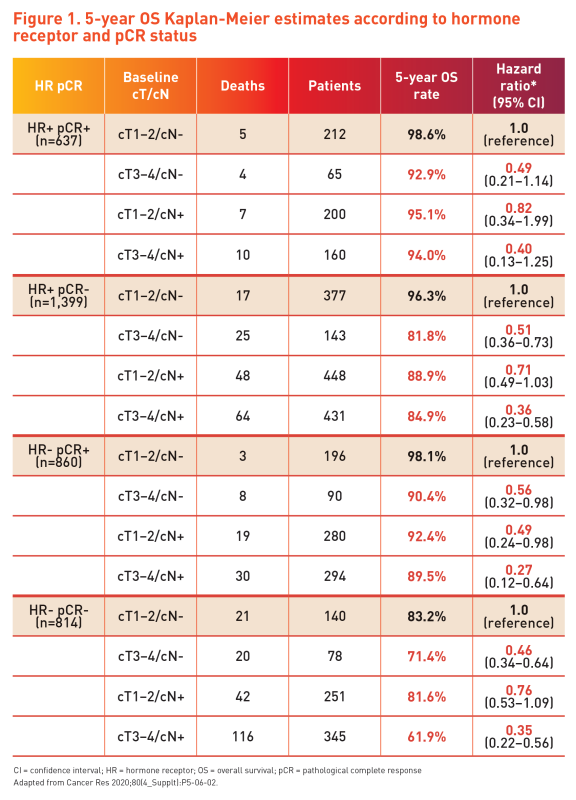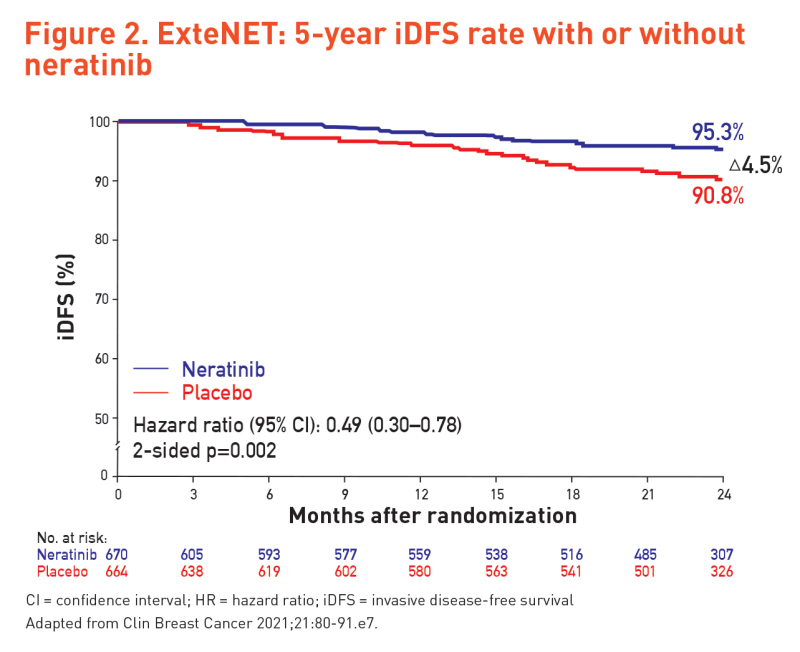Treatment decisions in post-neoadjuvant HER2-positive early breast cancer





Patients HER2-positive (HER2+) breast cancer (BC) who achieve pathological complete response (pCR) have significantly better event-free survival (EFS), yet pCR cannot overcome the prognostic impact of baseline tumour size and nodal status. At an industry-sponsored symposium, Professor Michael Untch of Obstetrics and Gynaecology Department of Helios Hospital in Berlin, Germany, discussed considerations behind treatment decisions in post-neoadjuvant HER2+ early BC and data supporting the use of neratinib, an irreversible, small-molecule pan-HER tyrosine kinase inhibitor (TKI), in this setting.
Importance and limitations of pCR
HER2+ BC, which accounts for 15–20 percent of all BC cases, is highly aggressive and associated with poor prognosis. [Comput Struct Biotechnol J 2021;20:333-342] The current standard of care for patients with high-risk HER2+ BC is neoadjuvant chemotherapy plus dual anti-HER2 targeted therapy, which is associated with pCR rates of up to 65 percent. [Front Oncol 2023;13:1066007]
Nevertheless, a substantial proportion of patients do not achieve pCR after neoadjuvant therapy, and the presence of residual disease is independently prognostic of decreased EFS and increased risk of recurrence, especially in patients with larger tumour size and primary nodal involvement. [J Clin Oncol 2023;41:2998-3008]
Furthermore, traditional poor prognostic features, namely, large tumour size and positive nodal status, remain important even after pCR. After a median follow-up of 61.2 months, the 5-year Kaplan-Meier estimates of overall survival (OS) were lower for patients with clinical tumour size 3–4 vs cT 1–2 and those with positive vs negative clinical nodal status. (Figure 1) [Cancer Res 2020;80(4_Suppl):P5-06-02]


In addition, ExteNET demonstrated a lower 5-year cumulative incidence of first central nervous system (CNS) recurrences with neratinib vs placebo (0.7 vs 2.1 percent), and more patients in the neratinib group were alive without a CNS recurrence at 5 years (98.4 vs 95.7 percent; HR for CNS-DFS, 0.41; 95 percent CI, 0.18–0.85). The potential CNS benefit was consistently shown across various high-risk subgroups, including non-pCR and node-positive patients. (Figure 3)
